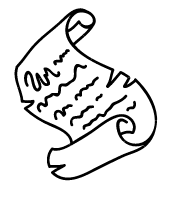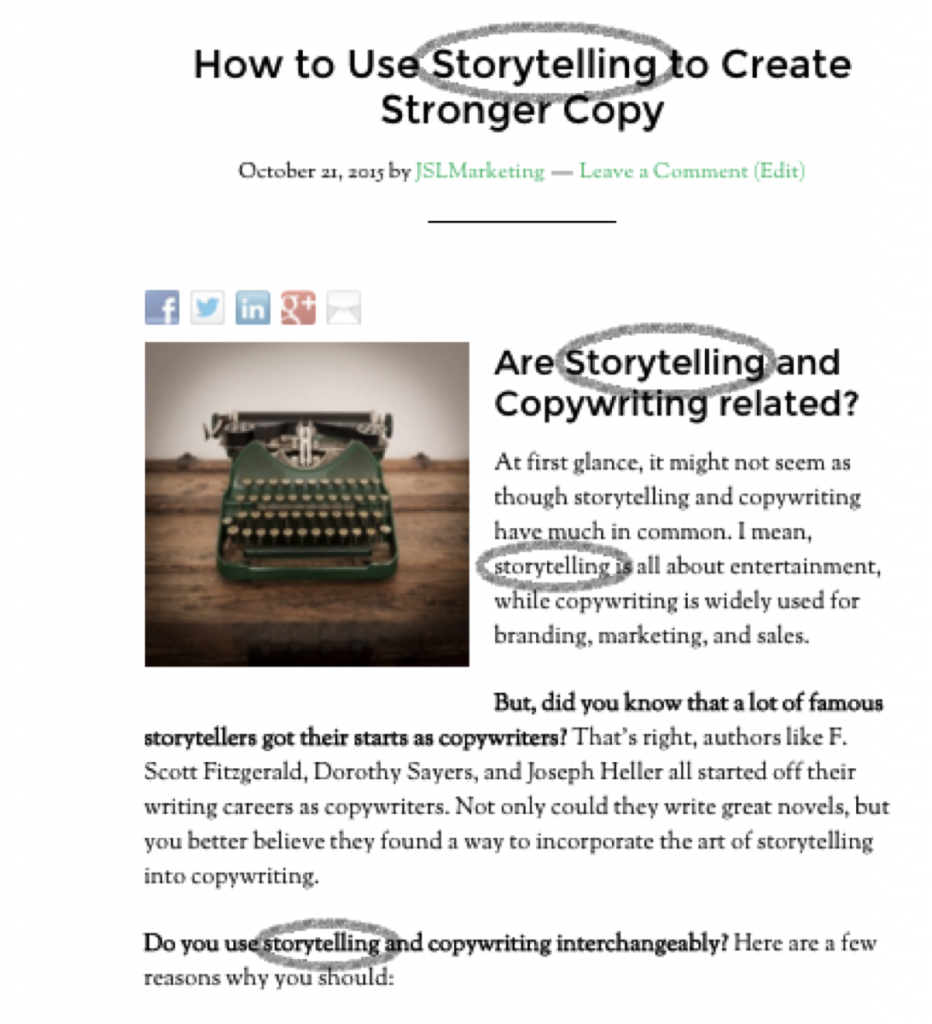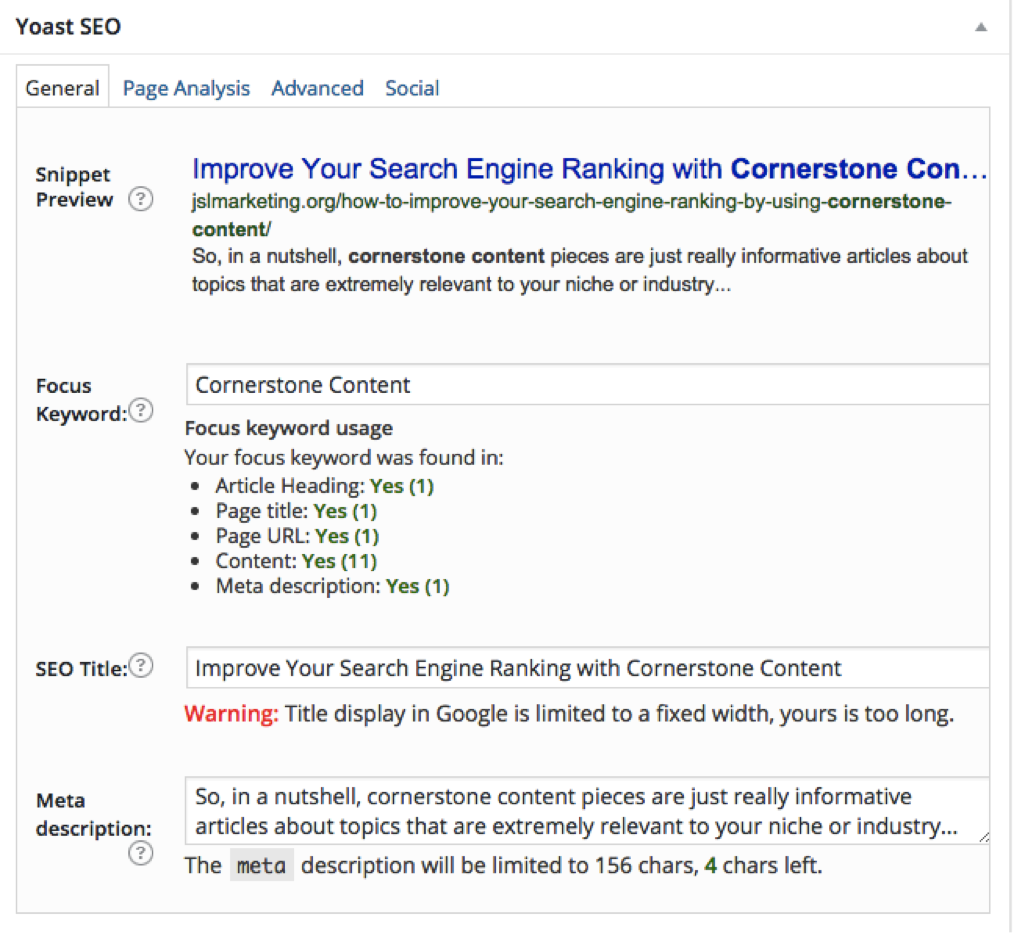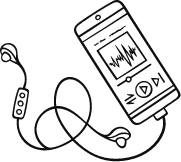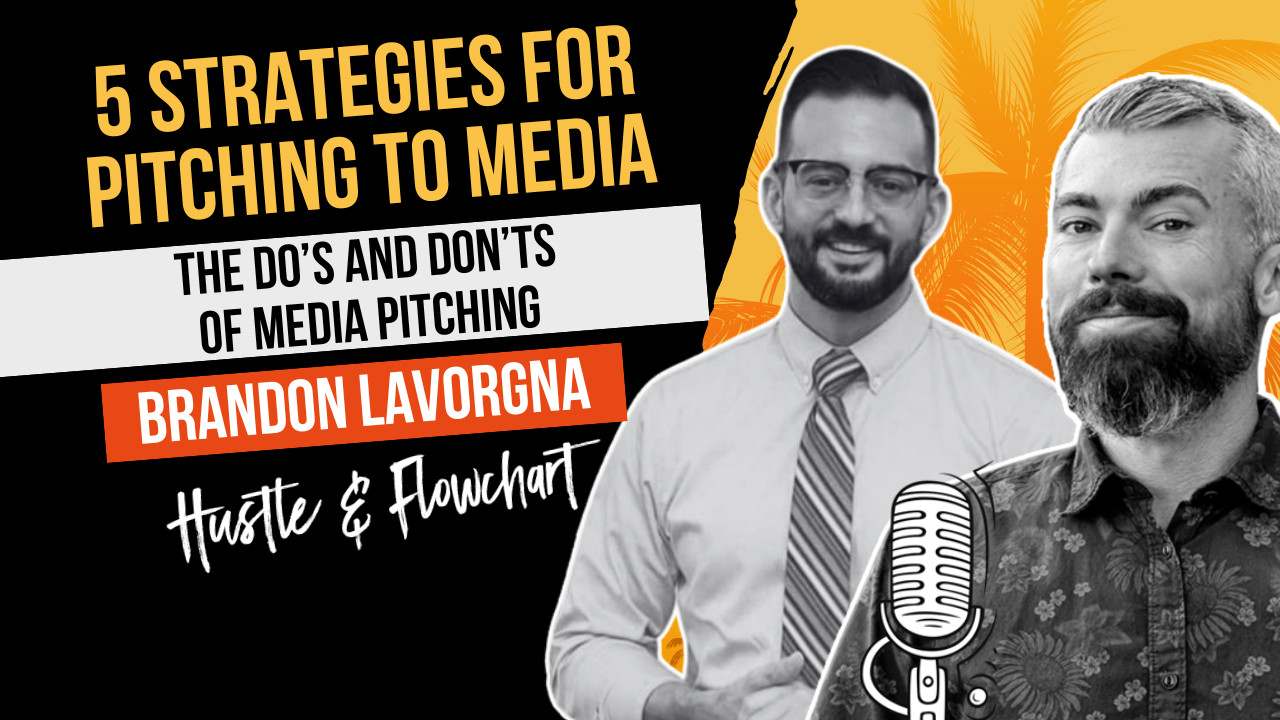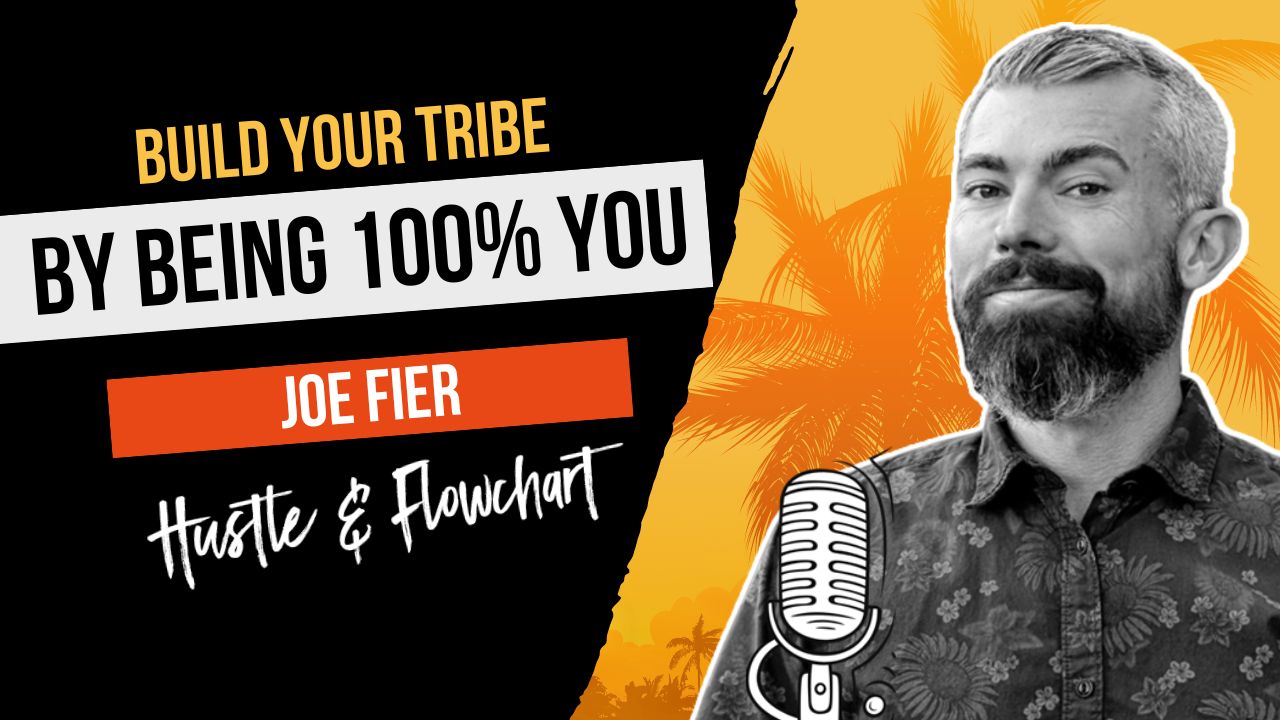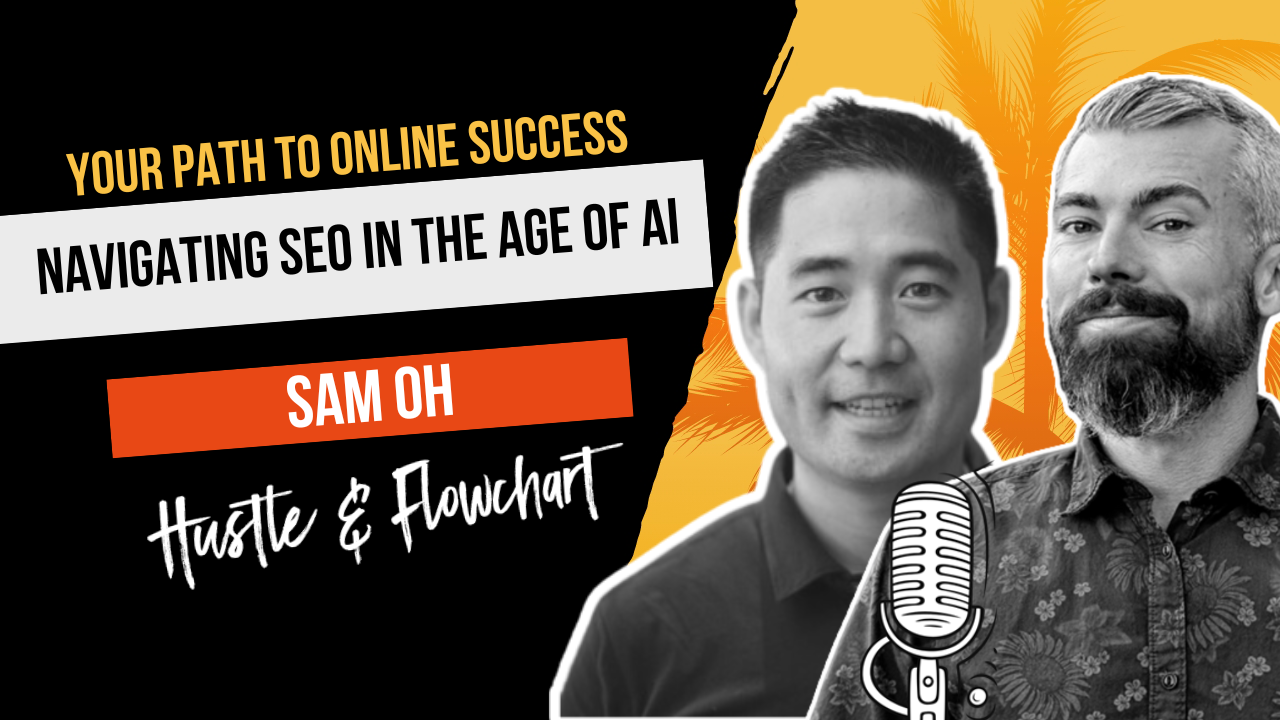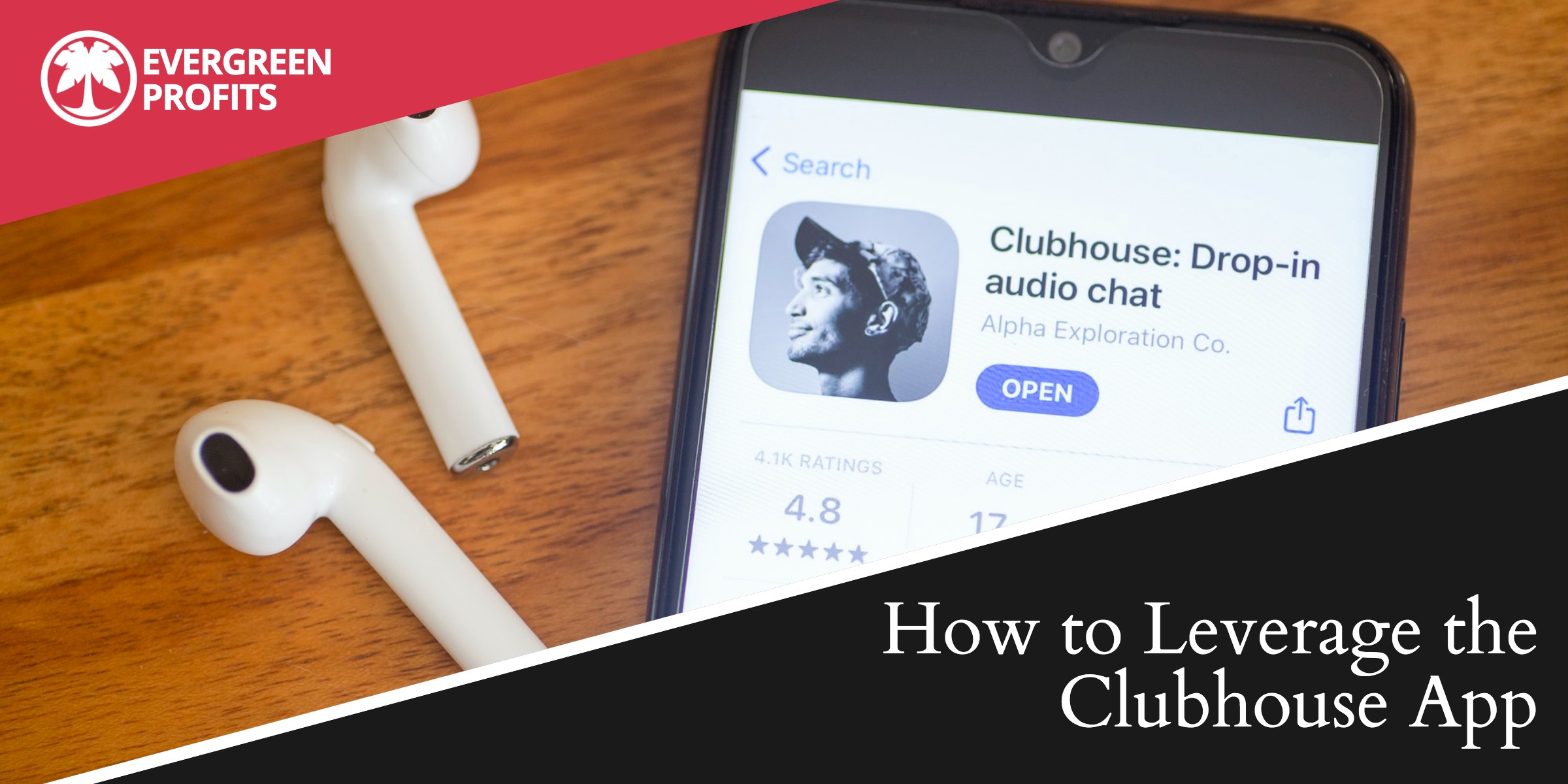Do you ever wonder why some websites rank better than others?
Are you tired of seeing your competitors outrank you in the search results for key terms and phrases? Wondering how their pages are consistently ranking highly in Google while yours never make it past the third page?
Unfortunately, there’s no magic formula or perfect science behind pulling your page to the top of the search results (at least that we know of), but there are definitely some contributing factors that can make a big difference.
And that’s where On Page SEO comes into play.
On Page SEO is pretty simple once you break it down – it’s just optimizing a single page on your website to target a particular keyword or phrase that is relevant to your niche/industry. And when done properly, this sort of optimization can help your page rank in the search results for that keyword.
So, what are the contributing factors that you need to be aware of and how can they be applied to your website? Read on to find out!
Table of Contents
ToggleProvide Valuable Content
If you’re not adding value to the topic, it’s probably best not to write about it. With millions of pieces of content floating around the web, the chances of an unoriginal web page being found are pretty slim.
But don’t let that discourage you – let it challenge you to be better! There’s always a way to write something old in a new and fresh way. So what exactly makes content valuable?
- Make sure it’s authentic and not self-promotive. If your content is just a thinly veiled advertisement, your readers will be able to see right through it – and they won’t come back for more.
- Focus on writing for your unique audience. Even if the topic has been written about a thousand times, it’s likely that your particular audience hasn’t heard about it, at least in their own words. Use their words and write like you’re talking right to them.
- Create useful content. If you’re creating content, it needs to be useful. By providing valuable content regularly, readers will start to consider you an authority or expert in your niche/industry, and they will keep coming back for more.
- Frequently updated. Search engines like to see fresh, regularly updated content – this alone will help your rankings in the search results. But search engines aside, your readers will appreciate the regular updates as well.
- Bookmark-able. Valuable content is the kind of content that readers bookmark in their browsers to come back to later as a reference. It’s also the kind of content that people link to from their own websites and share on their social media platforms. You want to create this type of content.
Create Shareable Content
One of the end goals of any content you create is for people to not only read and enjoy it but also link to it and share it on their social media platforms.
Think about the last piece of content you shared on Facebook or Twitter. What was it about that page or post that made you want to share it? Was it funny? Interesting? Shocking? Extremely useful? Those are some of the qualities that make content shareable and occasionally cause it to go viral on social media.
But even the most interesting or useful piece of content won’t be shared unless you make it easy for readers to do so. If you use WordPress, try installing a Plugin like WP Socializer or SumoMe. Both make it easy for readers to share your content on multiple platforms, and can also keep track of total shares for the page.
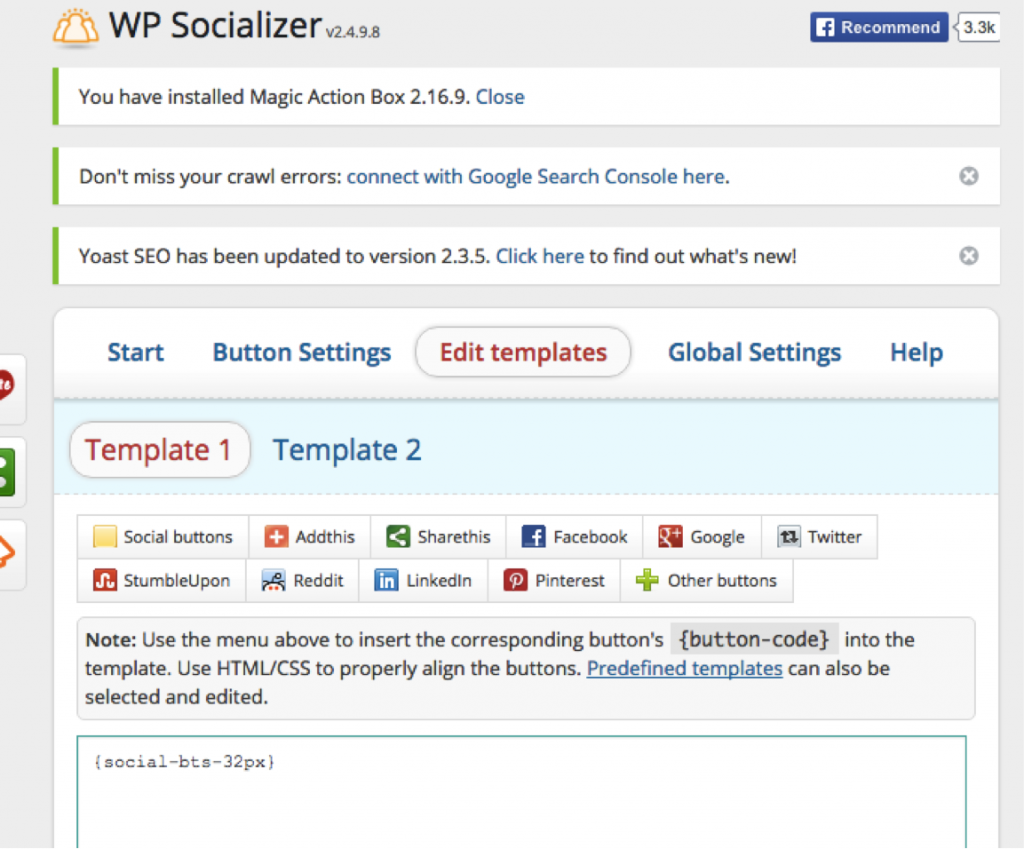
Here is the WP Socializer Plugin in action – easy for people to share your content, and easy for you to customize.
Keyword Targeted Content
While your website as a whole can’t rank for one single keyword, various pages within your site can. You should aim to have each page or post target a different keyword – this way it’s clear which page you want the search engines to rank when someone searches for that specific term.
Here are several places where the keyword should appear on your page:
- The URL. While not as important as it used to be in the early days of SEO, the URL still pulls some weight today. If you can include your keyword within the URL of your page somewhere, do it.
- The title. Including the keyword in your title is a must. Some other best practices for titles include keeping it short (5-6 words if possible) and making sure it will easily grab the attention of your readers. Also important to note – when others link to your page, they’ll often use part of the title (including the keyword) as the linking text, or anchor text, within their content. The search engines can see this, and factor the keyword use into the overall ranking of your page – so make sure your title is something relevant and catchy!
- Within the H2 and H3 tags. If you’re using H2 or H3 tags (headers) to help break up your content, try to work the keyword in when you can. It doesn’t have to be in every tag, just when it fits appropriately.
- Throughout the text. Lightly sprinkle the keyword throughout your text where it makes sense, preferably at least once close to the beginning and at least twice throughout the article – more often if the article is longer. But don’t overdo it. This is considered ‘keyword stuffing’ and will only hurt you.
- Bold and Italics. It can help a bit to have your keyword highlighted in bold font or italics. Not only does it draw your reader’s eye, but also puts an emphasis on the word for search engines. This isn’t as important as the other factors, but worth noting all the same.
- Image alt tags. If you’re using images within your text (which you should), be sure to include the keyword in the image alt tags. Search engines can’t interpret what the image is about unless you tell them by using an alt tag, so don’t forget to do this – otherwise it’s a missed opportunity to optimize.
- Meta descriptions. These are the short snippets of text that appear under the title of your page in the search results. Searchers will often read this to determine if they want to click over to your page, and the search engines highlight the keywords you use in bold font, so be sure to include them here as well.
Circled in the blog post above are several key places where the keyword “storytelling” is used correctly.
Something I’ve found useful when optimizing a page or blog post for a certain keyword is the Yoast SEO plugin. It analyzes your page for the keyword and gives you tips on how to improve the optimization. It then awards you a red, yellow or green light based on how the page would rank, and even shows you a preview of what your page title and meta description will look like in the search results. Regardless of your SEO skill level, I would totally recommend trying out this plugin!
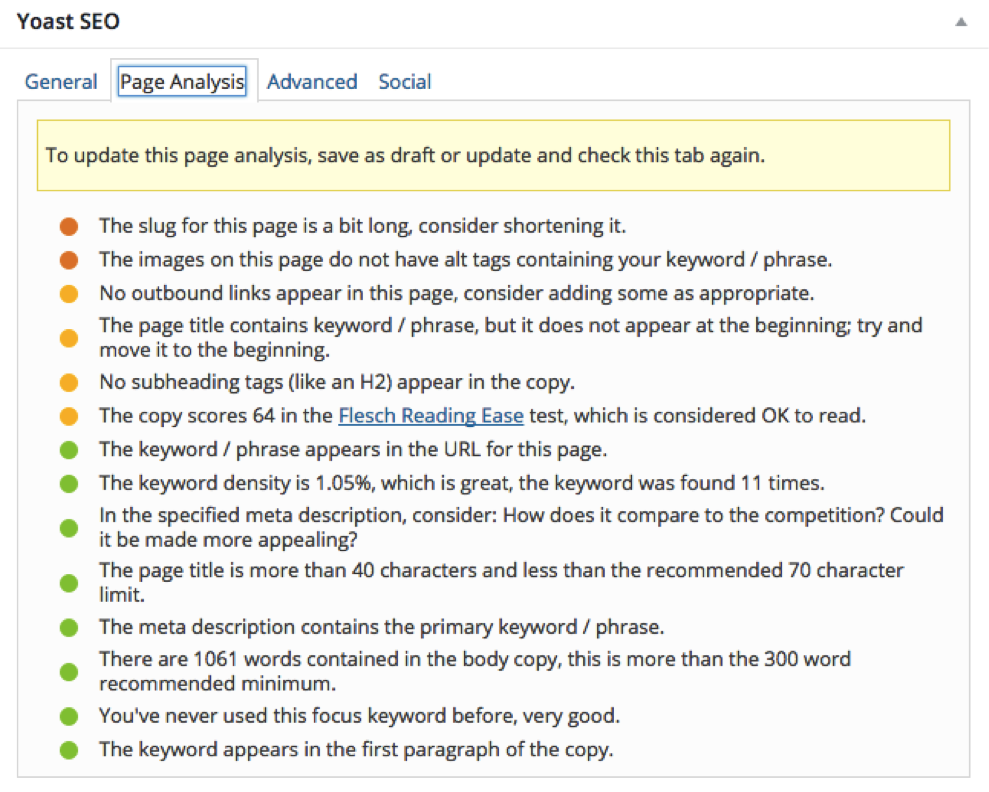
A preview of the Yoast SEO Plugin – you can see how this would be helpful for optimizing a page for a given keyword.
Quality User Experience (UX)
This sort of goes along with what we’ve already talked about, but it’s worth mentioning. You can have the best, most optimized content in the world, but if it’s poorly laid out, confusing or hard to read, most people won’t bother reading the full article.
Some things to consider:
- Make sure the page loads quickly. If readers have to wait for slow loading sites, they will most likely just click away.
- Incorporate a layout that flows well and is easy to read. If there are a lot of distracting ads or images on the page, it can seem confusing to readers. Also, if there are a lot of links and text that aren’t related to the primary content, this can be confusing as well. Just try to keep things as simple as possible.
- Scan-able. Not really a word, but make sure your content is easy for readers to skim/scan. I know it’s hard to believe, but a lot of readers skim for the important parts of an article before deciding if they want to go back and read the whole thing in. Just make it easy for them – use descriptive headers, bold font, lists and bullet points to emphasize the main parts of the article.
- Utilize links efficiently. If you have useful content elsewhere on your blog, link to it from within your content. Likewise, if an authority blog in your niche has an awesome article about your topic, link to it when appropriate. Not only does this help with your SEO, but it provides more quality content for your readers to enjoy. Trust me, they’ll appreciate the effort.
A Site that is Indexable and Crawlable
While not necessarily keyword related, making sure your page is both indexable and crawlable is extremely important to On Page SEO.
Making your page indexable means being sure that search engines can read your content and index it appropriately within the search results for certain keywords. And to do this you’ll need to use plain HTML. For example, images without alt tags or graphics with text and no HTML, or even Flash-files are not readable – and if search engines can’t read your content, they won’t be able to recognize your keyword usage either. If you’re planning on using lots of graphics, make sure that you are also using plain HTML as a supplement.
Additionally, your site needs to be crawlable. This means that when the search engine crawlers come through to index your site and categorize your content appropriately, they need to have a path to follow. Your URL structure is what makes the path clear for them.
It’s called URL hierarchy, and it needs to be established from the beginning of any site. Start with your home page, then extend to additional categories beyond that. For example, you might have your homepage, which links out to your blog, which links out to a category à YourSite.com/Blog/SEO-Tips. Then all posts you create related to that category – SEO Tips – would link back to that page. This makes it easy for search engines to determine what goes where and what pages are related to each other.

In the URL, notice the hierarchy of homepage > services > copywriting
And don’t ever create a page off by itself, not linking back to anything – the search engine crawlers won’t be able to find it! Also, try to keep all pages within four clicks of the home page – this makes things easier to find and more accessible to the crawlers.
Mobile Friendly
Last but not least, don’t forget to make your page mobile friendly. This is easily done, in fact, many WordPress themes already have this incorporated internally from the get-go. It’s important because so many people read web content on their phones in today’s world, and if it doesn’t load properly, or they have to pinch and zoom excessively, they’ll get annoyed and click away. And they probably won’t come back.
On a semi-related note, it’s also important to make sure your page loads properly in all internet browsers – like Safari, Chrome, Explorer, and FireFox. You never know where your audience will come from, so make sure that they will have a quality reading experience from whatever browser they might be using.
So, there you have it – a practical guide to On Page SEO. I hope you found this helpful! Ultimately, the most important thing to keep in mind is that you are writing for your readers first, search engines second. By doing this, you’re keeping your readers happy with interesting, useful content that they will probably end up sharing and promoting for you. And in the end, this all comes back around by helping to boost your rankings in the search results. Focus on the people, follow the steps in this guide, and you’ll be well on your way to creating optimized pages that rank highly in no time at all!

